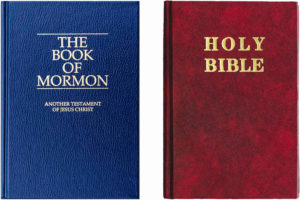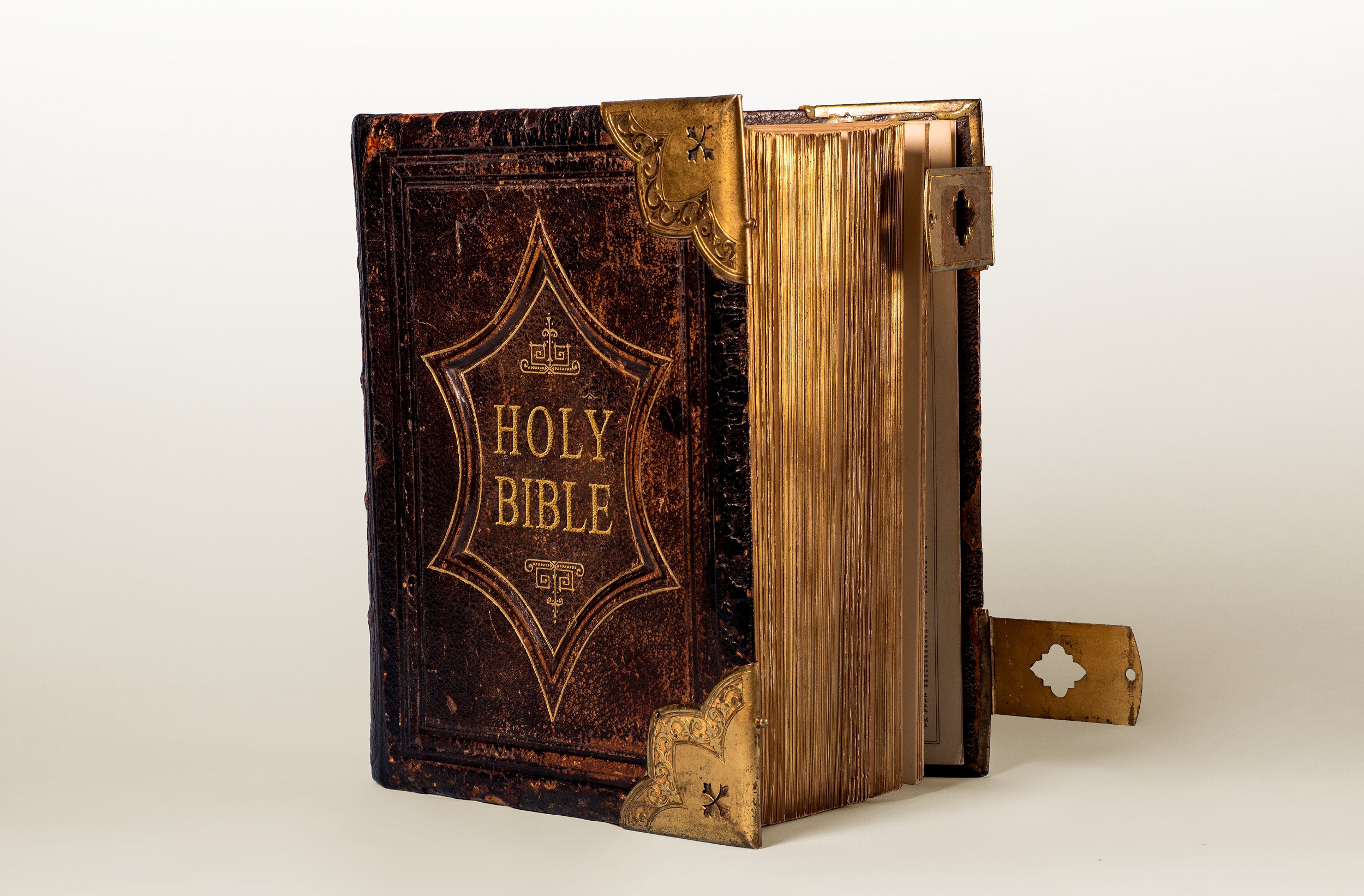Introduction
Before someone can even consider becoming a Christian, the first necessary step is to find out whether or not the Bible can be trusted. After all, the whole Christian belief system is based on the teachings of the Bible alone, and not on any other book, organisation, or source, thus if the Bible was unreliable, then that would mean Christianity would also be unreliable. This article will attempt to give you credible evidence in support of the reliability of the Bible. I sincerely hope that by the end of it, you will be able to read the Bible with the knowledge and assurance that it has been faithfully preserved for us all to this very day, to make us wise for salvation through faith in Jesus Christ (2 Timothy 3:14-15).
Manuscript Copies
Scholarly research has found that the original Bible autographs are gone. However, it has also found that before this happened, copies were made of them (2). There are approximately 24,000 handwritten copies of the New Testament, according to LDS Video Encyclopedia (1) (A Christian site that provides information on Mormonism), of which more than 5,000 are written in Greek, the original language of the New Testament (2, 3, 4, 6), while the remaining copies were written in other languages such as Latin, Syriac, Coptic (6), plus secondary translations made a little later such as Armenian, Gothic, Georgian, Ethipic, and others (8: p. 63). Lee Strobel wrote in his book, The Case For Christ (p. 62), that even if no Greek manuscripts existed today, we could still reproduce the contents of the New Testament just by piecing together the information from the other translations of early dates (8). In the early centuries of the Christian Church, scholars quoted the New Testament so extensively that all of it was quoted, except for 11 verses, according to Focus on the Family (3).
The manuscript quantity of the New Testament is astronomical compared to other ancient works. For example, Homer’s book The Iliad has 643 copies, Sophocles has 193 copies, and Aristotle has 49 copies (1). As for the Old Testament, the Christian Research Institute says there are also approximately more than 14,000 manuscripts and fragments of the Old Testament (4). These manuscripts are further supported by historical documents such as the Dead Sea Scrolls, the Septuagint (a Greek translation of the Old Testament made in the 3rd century BC), the Samaritan Pentateuch, the Targums (ancient paraphrases of the Old Testament), and the Talmud (teachings and commentaries related to the Hebrew Scriptures) (6).
Time Between Originals and Copies
The time between the original writings and copies for the New Testament is incredibly short. According to Bible.org, the majority of the New Testament copies were made in less than 200 years after the originals. Some were written within 100 years (6). According to the Christian Research Institute, from the time of the originals, the earliest copy we have was made 60 years or so later (4), and Lee Strobel recorded in his book, The Case For Christ (pp. 63-64), that the earliest New Testament copy is a papyrus (a plant that grew in the Nile Delta in Egypt) fragment of the Gospel of John, originating between AD 100-150 (8). The earliest complete copy of the New Testament, which was written on parchment, called the Codex Sinaiticus, dates to about 350 AD (8: p. 65).
These dates are very short when they’re compared with other classical works, which have an average of 1,000 years between the original and copy (6). For example, the second best preserved work, Homer’s The Iliad’s first copy was 500 years from the original, Sophocles was 1,400 years from the original, and Aristotle was 1,400 years from the original (1). As for the Old Testament, the original manuscript was completed in 400 BC, and the earliest copies are found in the Dead Sea Scrolls, dating back to 250 BC (4). Like with the New Testament, this is also very short for a document of its time.
Time Between Event and Original Writing
It should also be noted that much of the New Testament’s original writings were written only a few decades after the death and resurrection of Jesus (3, 7). One example of a very early book of the New Testament is 1 Corinthians, which dates back to the 50’s AD (about 20 years after the death and resurrection of Christ) (3). This is way too early for myths or legends to distort the facts (7). For example, according to Dr. Craig Blomberg in The Case For Christ, Alexander’s first two biographies were written by Arrian and Plutarch more than 400 years after his death, yet historians still trust them. Myths and legends only developed about Alexander in the centuries after the two writers (8: p. 34).
Accuracy of the Copies
According to the Christian Apologetics and Research Ministry, these copies were incredibly accurate, meticulous, and precise, and the method of the God-fearing people who copied the original manuscripts was so exact and precise that the New Testament is considered 99.5% textually pure (2). The remaining 0.5% consists of 40 lines of textual corruption, and some say there are about 400,000 variants between the Bible manuscripts (1). While this might seem alarmingly high, this is not the case. The vast majority of these variants are due to spelling, grammar, and other common scribal errors, and can easily be fixed through textual criticism according to LDS Video Encyclopedia (1). Less than 1% of the variants affect the meaning of the text (1), but not a single Christian doctrine is affected by this (1, 2, 8: p. 68).
The Jewish scribes of the Old Testament also held great reverence toward the scriptures (6). Craigtowens.com says that the rigorous standards by which the Jewish scribes proved the accuracy of a copy of a Bible manuscript was higher than for any other literature (5). According to Bible.org, when the Jewish scribes made copies of the Old Testament, the whole process was designed in a way to prevent even the slightest error; so much, that every letter, word, and line was counted, and the middle letters of the Pentateuch (the first five books of the Bible) and whole Old Testament, were determined (6). If one mistake was made, the manuscript would be destroyed (6). As a result, the Hebrew Bible’s quality is superior over all other ancient manuscripts (6). According to Craigtowens.com, most modern-day Bibles are based on a 1,000 year old manuscript, the accuracy of which has been proved by the discovery of the Dead Sea Scrolls in 1947, which has manuscripts dating back to 250 BC (5).
Archaeological Confirmation
Much of the historical details of the Bible have been confirmed by archaeological research. According to GotQuestions.org, sceptics believed that the city Ur did not exist as early as Genesis chapter 11, however, in the 1920’s archaeological research found that it did in fact exist (7). Sceptics also doubted the existence of a people-group called the Hittites (Mentioned in Genesis 15, 23, 49, etc.), but after a Hittite city was discovered in Turkey that contained records, their existence was no longer doubted (7). ChristianAnswers.net says that with the discovery of the Ebla archive in Northern Syria in the 1970’s, the narrative of the Patriarchs (Abraham, Isaac, and Jacob) have been considered possible by sceptics (9). Documents on clay tablets that date back to 2,300 BC contain personal and place names that are contained in the Patriarchal accounts, thus proving their reliability (9).
There is also archaeological evidence for the New Testament, too. Creation.com writes that an inscription has been found which says that Pontius Pilate was a Roman prefect (10). More evidence includes the findings of the ossuaries (“a container or room in which the bones of dead people are placed.” [Bing’s definition]) of Caiaphas the high priest, and of James, the brother of Jesus (10). Archaeologist Nelson Glueck concluded that no archaeological discovery has ever controverted a single biblical reference (5). Furthermore, there is no evidence that contradicts or disproves the history of both the Old and New Testaments (7).
Fulfilled Prophesies
On top of the manuscript quality, quantity, and archaeological evidence, the Bible also has fulfilled prophesies which supplement its reliability. Some of the most significant ones are about Jesus. For example, the prophet Micah, in Micah 5:2, prophesies that the Christ will be born in Bethlehem, and Matthew 2:1 records the fulfillment of this prophesy 700 years later, when Jesus was born there (4, 11). Even 400 years before crucifixion was invented, Psalm 22, Psalm 34:20, and Zechariah 12:10 prophesy that the Christ will die in a way identical to crucifixion, that none of his bones will be broken, and that his side will be pierced, which was fulfilled in Jesus’s real, historical crucifixion, and when one of the soldiers pierced his side to confirm his death, before they could break his bones to quicken the death, as recorded in passages such as John 19:23-24 (11). 1,000 years before Jesus’ life, King David prophesied that in the future God would raise the Christ again from the dead in Psalm 16:8-11, and this was fulfilled in the real, historical resurrection of Jesus, as recorded in Acts 2:25-31, which has the eye-witness testimonies of the Apostles (Acts 2:32).
The prophet Isaiah prophesied, in Isaiah 44:28, 45:1, and 45:13, that a man named Cyrus will destroy Babylon, which was said to be impregnable, subdue Egypt, and most of the rest of the known world. He also prophesied that Cyrus would set the Jewish exiles free without a payment of ransom. 180 years later he did all these things (11). Joshua prophesied in Joshua 6:26 that one man would sin by rebuilding Jericho, at the cost of his oldest son’s life at the beginning of its construction, and his youngest son’s at the end, which was fulfilled about 500 years later by Hiel (1 Kings 16:33-34) (11). The prophet Ezekiel prophesied that because of its sin, the city Tyre would have many nations fight against it, its walls and towers destroyed, its soil, timbers and debris cast into the water (Ezekiel 26:3-4, 12), and that it will never be rebuilt (Ezekiel 26:14) (4). This was fulfilled completely after Alexander the Great demolished the site in 332 BC, and built a causeway to the island before taking the fortified rock, thus making Tyre a peninsula, changing the site forever (12). The chance that these fulfilled prophesies happened by mere coincidence, most of which were made hundreds of years beforehand, is mathematically impossible.
Conclusion
Because of the superb quality and quantity of the Bible manuscripts, the short time span between the originals and the copies, as well as between the actual event and the originals, the archaeological confirmation of biblical historical details, and the fulfillment of biblical prophesies, it is more than reasonable to believe that the Bible is very reliable. In fact, if it were not reliable, then we would have to discount literally every single other ancient work of its time (eg. Plato, Aristotle, Caesar, Tacitus, etc.), because the Bible is the best preserved of them all. The Apostles were eyewitnesses of Jesus’ life, death, and resurrection, along with the more than five hundred witnesses to whom Jesus appeared (Luke 1:1-4; John 21:24; 1 Corinthians 15:3-8; 2 Peter 1:16). They travelled with him, were taught by him, saw his conduct, and his miracles. They faithfully recorded what they saw and heard, and were loyal to him and what truly happened even unto death. The evidence is there which testifies to the reliability of the Bible. It all comes down to whether you choose to believe it or not.
References
(1) 2012, Is the Bible Reliable?, ldsvideoencyclopedia, last accessed on 22 March 2017, <https://www.youtube.com/watch?v=cWxwfFNyVws>
(2) Slick, M, Is the Bible reliable?, Christian Apologetics and Research Ministry, last accessed on 22 March 2017, <https://carm.org/is-the-bible-reliable>
(3) Velarde, R 2009, Is the Bible Reliable?, Focus on the Family, last accessed on 22 March 2017, <http://www.focusonthefamily.com/faith/the-study-of-god/how-do-we-know-the-bible-is-true/is-the-bible-reliable#fn7>
(4) Hanegraaff, H 2009, Bible Reliability: M-A-P-S to Guide You through Bible Reliability, Christian Research Institute, last accessed on 22 March 2017 <http://www.equip.org/article/bible-reliability-m-a-p-s-to-guide-you-through-bible-reliability/>
(5) Owens, C T 2017, Can We Really Know If The Bible Is God’s Word?, Craig T. Owens, last accessed on 22 March 2017, <https://craigtowens.com/2017/01/09/can-we-really-know-if-the-bible-is-gods-word/>
(6) Boa, K 2016, How Accurate is the Bible?, Bible.org, last accessed on 22 March 2017, <https://bible.org/article/how-accurate-bible>
(7) Is the Bible reliable?, GotQuestions.org, last accessed on 22 March 2017, <https://www.gotquestions.org/Bible-reliable.html>
(8) Strobel, L 1998, The Case For Christ, Zondervan, Grand Rapids, MI
(9) Wood, B 1995, In what ways have the discoveries of archaeology verified the reliability of the Bible?, Christian Answers Network, last accessed on 22 March 2017, <http://www.christiananswers.net/q-abr/abr-a008.html>
(10) Halley, K 2017, Archaeology supports the Bible, Creation.com, last accessed on 22 March 2017, <http://creation.com/archaeology-supports-the-bible>
(11) Ross, H 2003, Fulfilled Prophecy: Evidence for the Reliability of the Bible, Reasons to Believe, last accessed on 22 March 2017, <http://www.reasons.org/articles/articles/fulfilled-prophecy-evidence-for-the-reliability-of-the-bible>
(12) Engelbrecht, E A, Murray, S R, Paavola, D E, Prange, V H, Sorensen, R A, Walther, M P (eds) 2009, The Lutheran Study Bible, Concordia Publishing House, St. Louis






